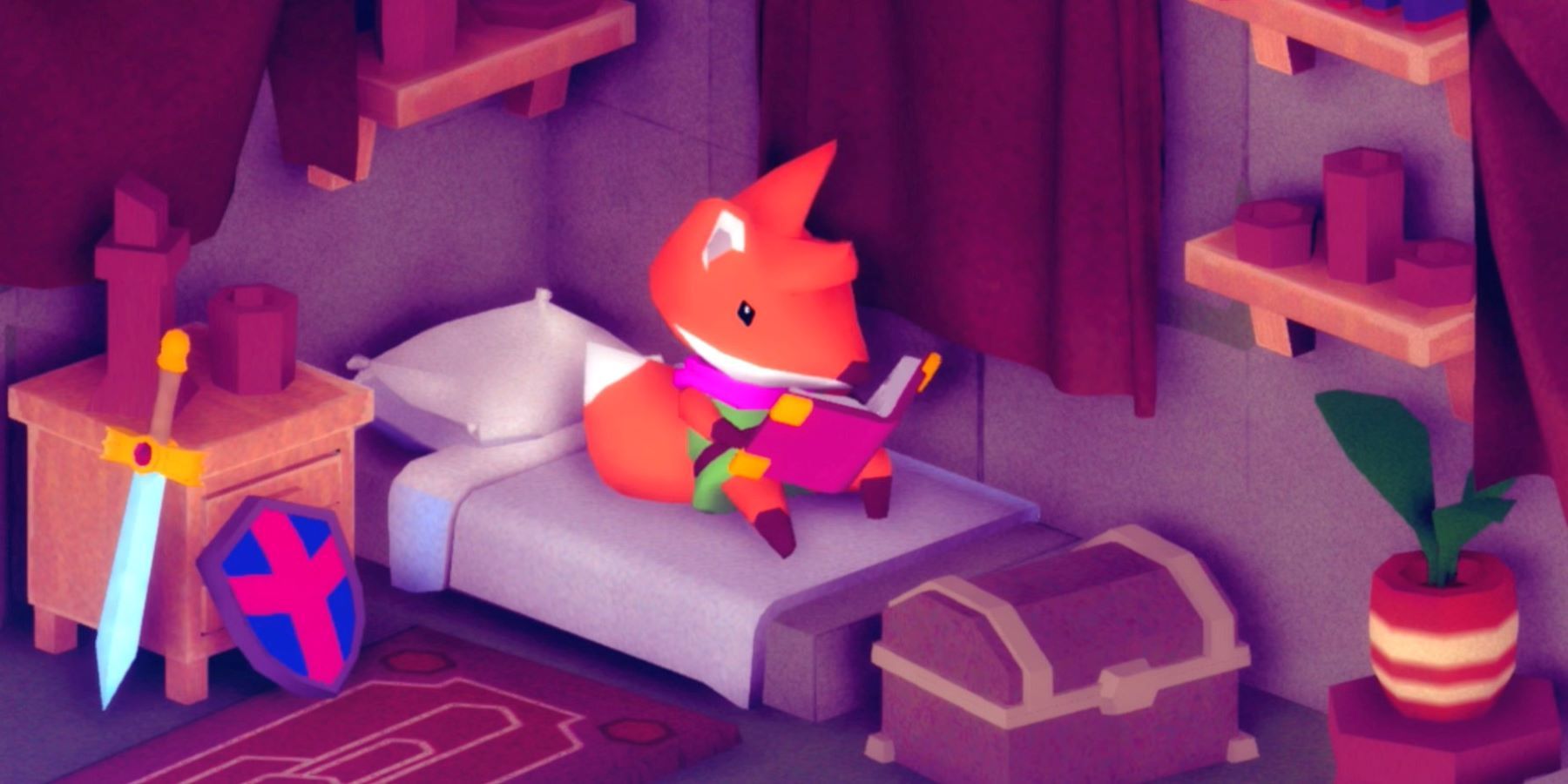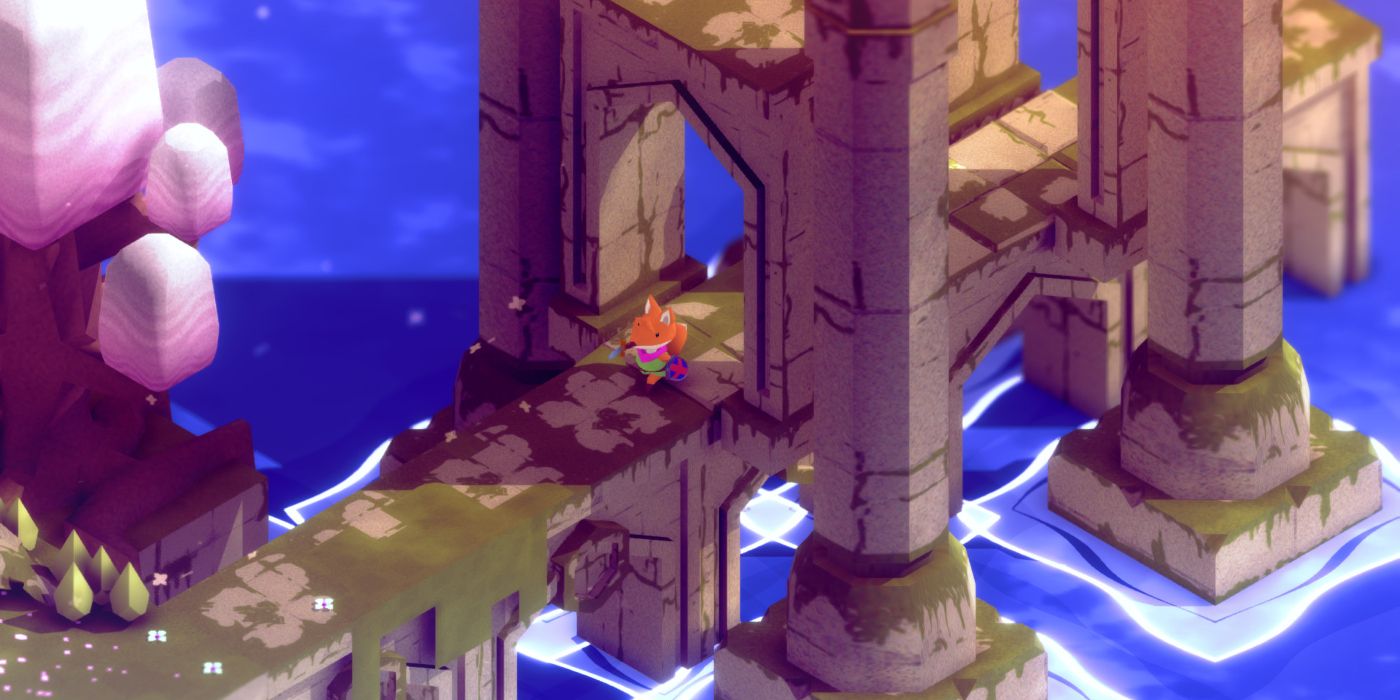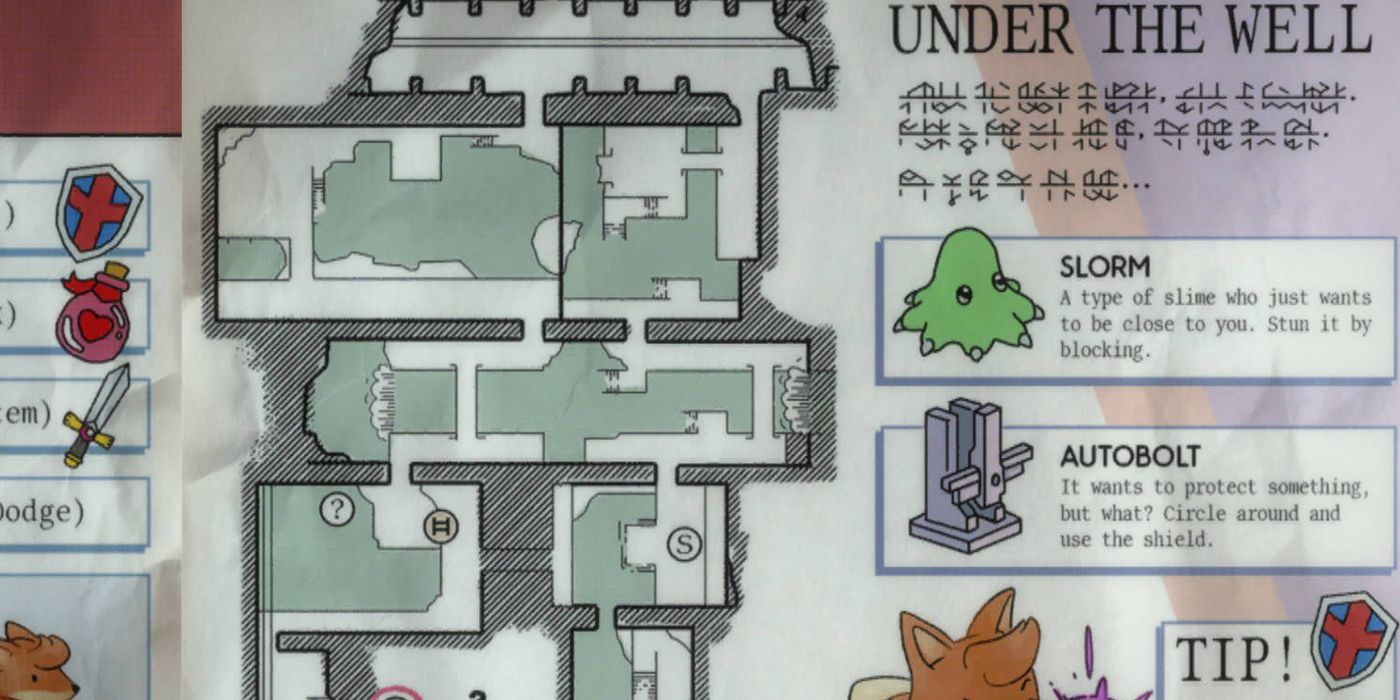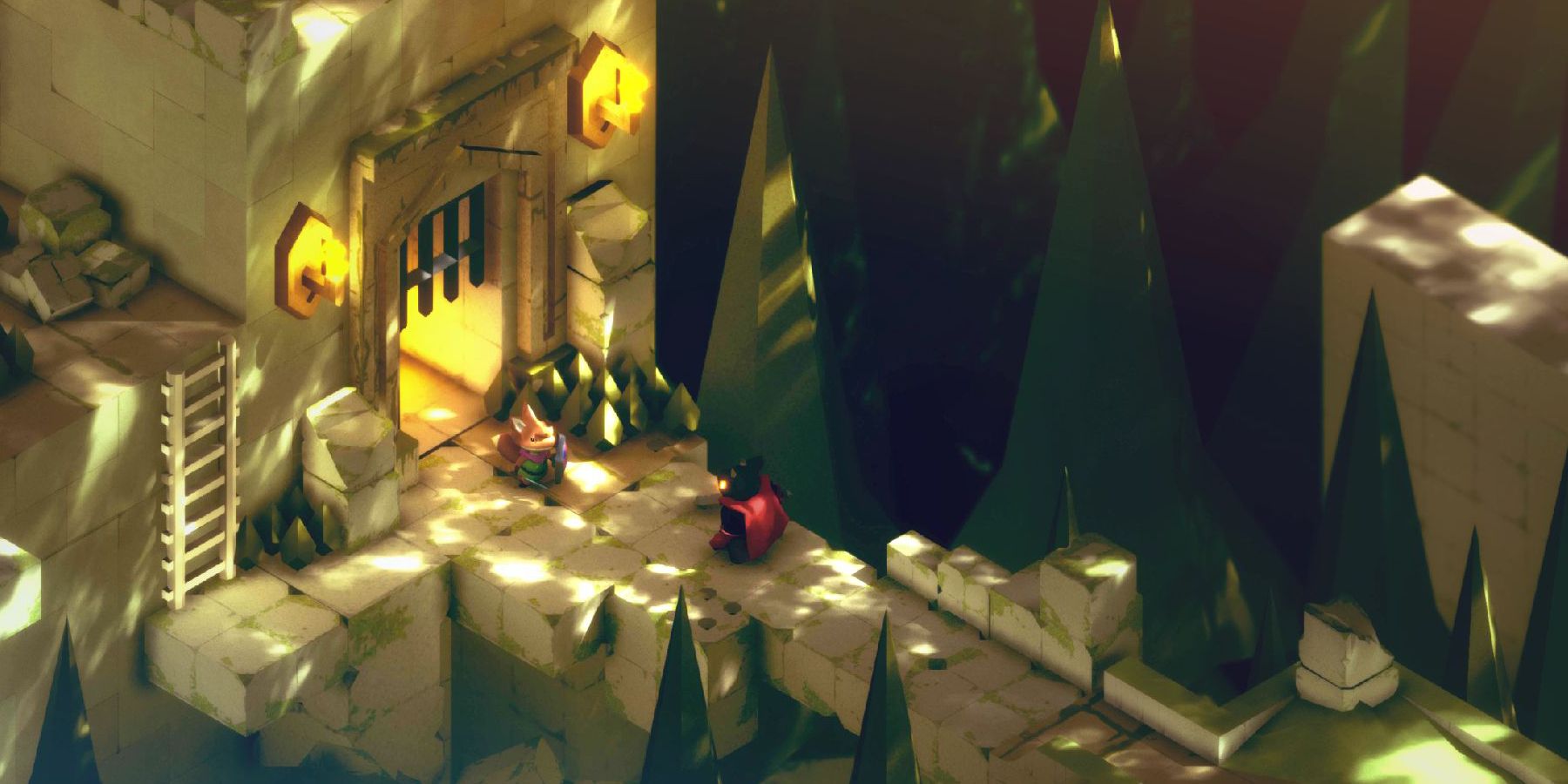The seven-year wait for Andrew Shouldice's Zelda-like opus Tunic is finally drawing to a close. An isometric adventure game featuring a fox hero, Tunic aims to recapture the sense of childlike wonder that many millennial gamers experienced during the NES era. That ethos extends to the titles' approaches to storytelling and narrative content.
Even games that use cryptic storytelling methods, like the environmental storytelling and item tool-tips of Elden Ring, are ultimately puzzle pieces that form a coherent tapestry. Tunic is taking a different tack. Game Rant spoke with Shouldice, Tunic's lead designer and programmer, about the indie title's emphasis on interpretation, and parity between the player and lead character's experiences.
Creative, Not Consumptive, Narrative in Tunic
Shouldice is cagey in regard to almost every aspect of Tunic, desperate to avoid spoilers or anything else that could compromise the player's ability to organically discover parts of his game. Discussing Tunic's narrative, Shouldice was only willing to give an academic overview of the story's structure, rather than its content.
“The idea of exploring a world, and piecing together… not necessarily ‘The Story,’ but your own thoughts about what happened or could have happened in this place is what is most interesting to me. It is a story that is not an act of consumption, so much as an act of creation.”
Instead of imposing a plot on the fox, it is up to the player to excavate (or ignore) the levels of potential meaning buried in the game's ruined world. Shouldice's goal is for the player and Tunic's fox hero to have a comparable experience. The player is the fox, as he put it, with everything from the path they chart through the world, to how they fight, to what sort of things motivate their exploration defining both journeys. Shouldice acknowledged this makes for a very different kind of narrative than something that fellow Finji project Chicory: A Colorful Tale has to offer.
But the result of Tunic's ethos is that creating an interpretation of a story is a creative, rather than consumptive act. While modern titles often feed the player narratives with cinematics, conversations, and contextual motivations, Tunic hands them building blocks to make a narrative of their own choosing. It is a blank canvas, or box of LEGOs, as opposed to a puzzle, text, or picture.
Tunic Uses Cryptic Texts to Catalyze Wonder
The trick with such open-ended narratives is giving players enough options to come up with something wholly unique, while withholding just enough information to accommodate multiple readings. To accomplish this, Shouldice included a number of deliberately cryptic mechanics to further drive home Tunic's emphasis on discovery. One such mechanic comes in the form of an untranslated, angular runic language that is present on the game's sign posts and manual pages. But Tunic's appreciation of cryptic wonder has an even deeper root.
“I remember going to a Warp Zone for the first time in Super Mario Bros. I probably knew the word 'Welcome,' but that was definitely the first time I had seen either “Warp” or “Zone.” So, it’s like, 'Welcome to bizarre place unknown! Welcome to enormous mystery!' Hopefully having most of the text be these cryptic characters [in Tunic] will contribute to that feeling.”
The experience of retrieving meaning from a text despite a language barrier is again familiar to many young gamers who started playing games before developing broad vocabularies or critical reading skills. It is akin to trying to play an exported Japanese title, with the meaning behind walls of kanji eluding most western audiences.
Tunic As a 'Lonely' Experience
When it comes to characters, Shouldice has acknowledged that Tunic is "a fairly lonely experience," and the same can be said of the original Legend of Zelda. In certain respects, including a cast of characters would compromise the player's abilities to interpret the game on their own terms. If Tunic's fox hero is railroaded into helping or opposing another character by the plot, there is suddenly a discrepancy between the player and protagonist's experiences of the world.
While often derided as missed storytelling opportunities in modern contexts, silent protagonists are often leveraged to avoid putting words in the player's mouth, which could again potentially lead to a disparity between their experience and the character's in Tunic. It will be interesting to see how these conventions hold up in current day, and fortunately players don't have to wait much longer before diving in.
Tunic releases March 16, 2022, for PC, Xbox One, and Xbox Series X/S.




